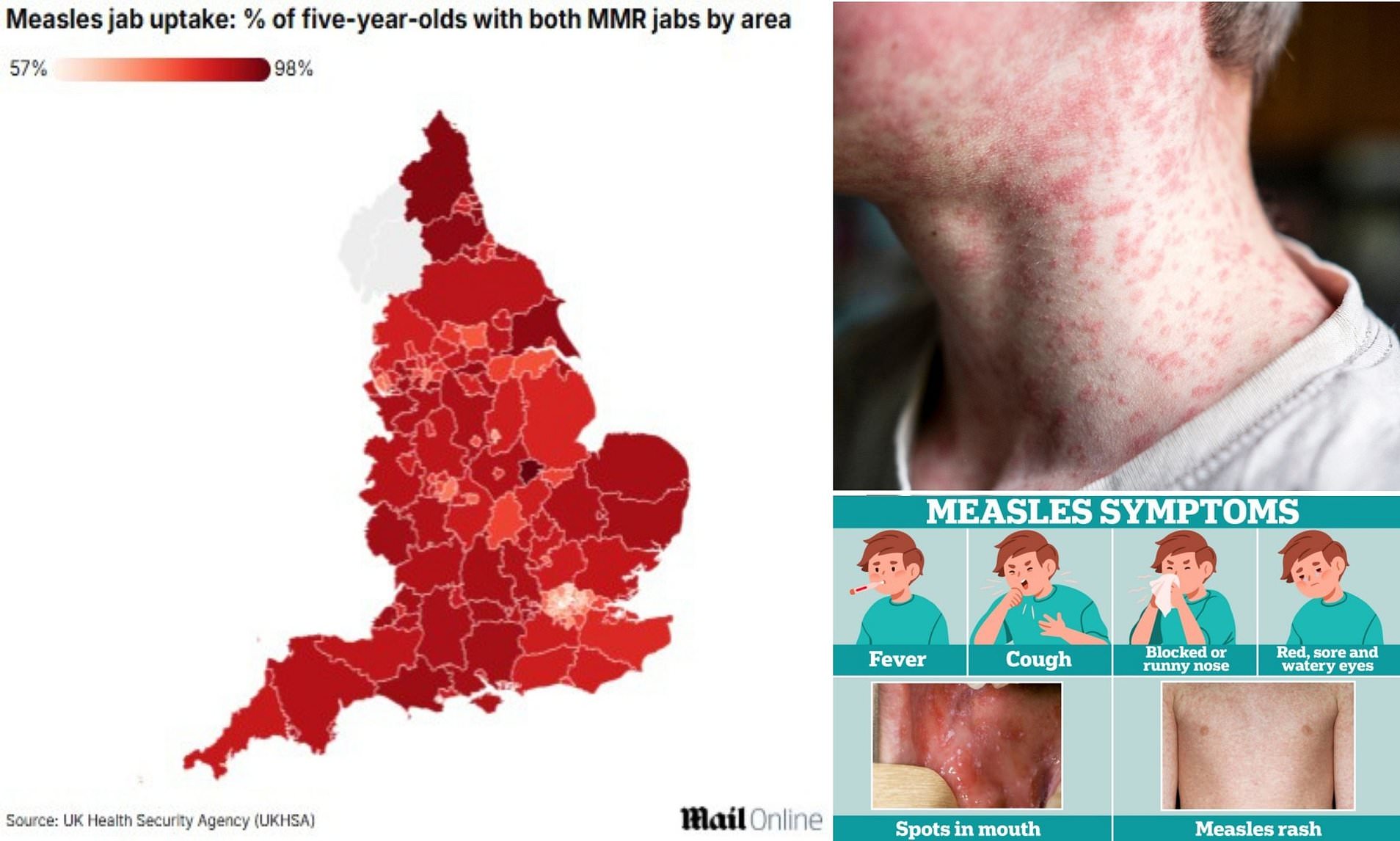
Rising Concerns Over Measles Vaccination Rates in England
Recent data has highlighted a growing concern regarding the vaccination rates for measles, mumps, and rubella (MMR) among children in certain parts of England. According to the latest figures, nearly half of children in some regions have not received both doses of the MMR vaccine by the age of five. This alarming trend has raised serious concerns among health officials, who emphasize the importance of achieving a vaccination rate of at least 95% to prevent outbreaks of these highly contagious diseases.
In Kensington and Chelsea, one of the areas with the lowest vaccination rates, only 57.2% of children aged five are fully protected against measles, mumps, and rubella. This is significantly below the recommended threshold, which could leave communities vulnerable to outbreaks. Nationally, the vaccination rate stands at 85.2%, showing a slight increase from previous quarters but still remaining one of the lowest in a decade.
Experts have warned that low vaccination rates can lead to severe consequences, including hospitalizations and long-term health issues. The UK Health Security Agency (UKHSA) has released data showing that measles cases have risen in recent years, with last year recording the highest number of infections since 2012. In the United States, two deaths linked to measles were reported earlier this year—both individuals were unvaccinated, marking the first fatalities from the disease in the country since 2015.
The MMR vaccine is administered in two doses: the first at one year of age and the second shortly after the child turns three. Together, these doses provide up to 99% protection against measles, mumps, and rubella. These diseases can lead to serious complications such as meningitis, hearing loss, and issues during pregnancy.
According to the UKHSA data, between January and March 2025, the proportion of children aged five who had received the first dose of the MMR jab increased by 0.3% to 92.4%. Meanwhile, 85.2% had received both doses, showing a 0.5% rise compared to the previous quarter. However, London continues to lag behind other regions, occupying 19 of the top 20 spots for low MMR uptake. Other areas with low vaccination rates include Hammersmith and Fulham, Hackney, Westminster, and Enfield.
Outside of London, Nottingham recorded the lowest uptake rate at 71.4%, followed by Manchester and Birmingham at 75.8% each, and Liverpool at 76.4%. In contrast, Rutland and Northumberland achieved high vaccination rates, with 97.6% and 95% of children receiving both doses, respectively.
Dr. Doug Brown, Chief Executive of the British Society for Immunology, emphasized the importance of vaccination in protecting children from measles. He noted that the disease can cause severe illness and long-term consequences, with one in five children requiring hospitalization during an outbreak. Dr. Brown urged parents to ensure their children receive both doses of the MMR vaccine at the correct timepoints and to consult their GP if they suspect their child has missed a dose.
Professor Stephen Griffin, an infectious disease expert at the University of Leeds, added that maintaining a vaccination coverage of around 92-95% is essential to prevent outbreaks. He warned that measles is highly infectious and can lead to serious complications, even in mild cases. In unvaccinated individuals, the virus can cause a rare but deadly condition known as sub-acute sclerosing pan encephalitis, which affects the brain years after initial infection.
Health officials in the UK and Europe have expressed concern over the rising number of measles cases. In England, there have been 420 confirmed cases this year, with almost 200 cases reported in April and May alone. More than a third of these cases occurred in London, with significant numbers also reported in the South West and East of England. The World Health Organization (WHO) has noted that measles rates in Europe have doubled in the past year, with low vaccination rates threatening further spread.
The WHO recommends that at least 95% of children should be vaccinated against preventable diseases to avoid outbreaks. Measles, which presents with flu-like symptoms and a distinctive rash, can lead to severe complications if it spreads to the lungs or brain. One in five infected children may require hospitalization, while one in 15 could develop life-threatening conditions such as meningitis or sepsis.
In addition to MMR, vaccination rates for other childhood vaccines have also shown slight improvements. The four-in-one DTaP/IPV vaccine saw a 1% increase, reaching 82.7%, while the Hib/MenC booster reached 90.3%. The six-in-one jab, which protects against diphtheria, tetanus, whooping cough, polio, Hib, and hepatitis B, was administered to 93.4% of five-year-olds, up by 0.1% from the previous quarter.
Health authorities continue to stress the importance of vaccination in protecting public health. With rising concerns over measles and other preventable diseases, efforts must be redoubled to ensure all children receive the necessary immunizations. Parents are encouraged to stay informed and take action to safeguard their children's health.
Post a Comment